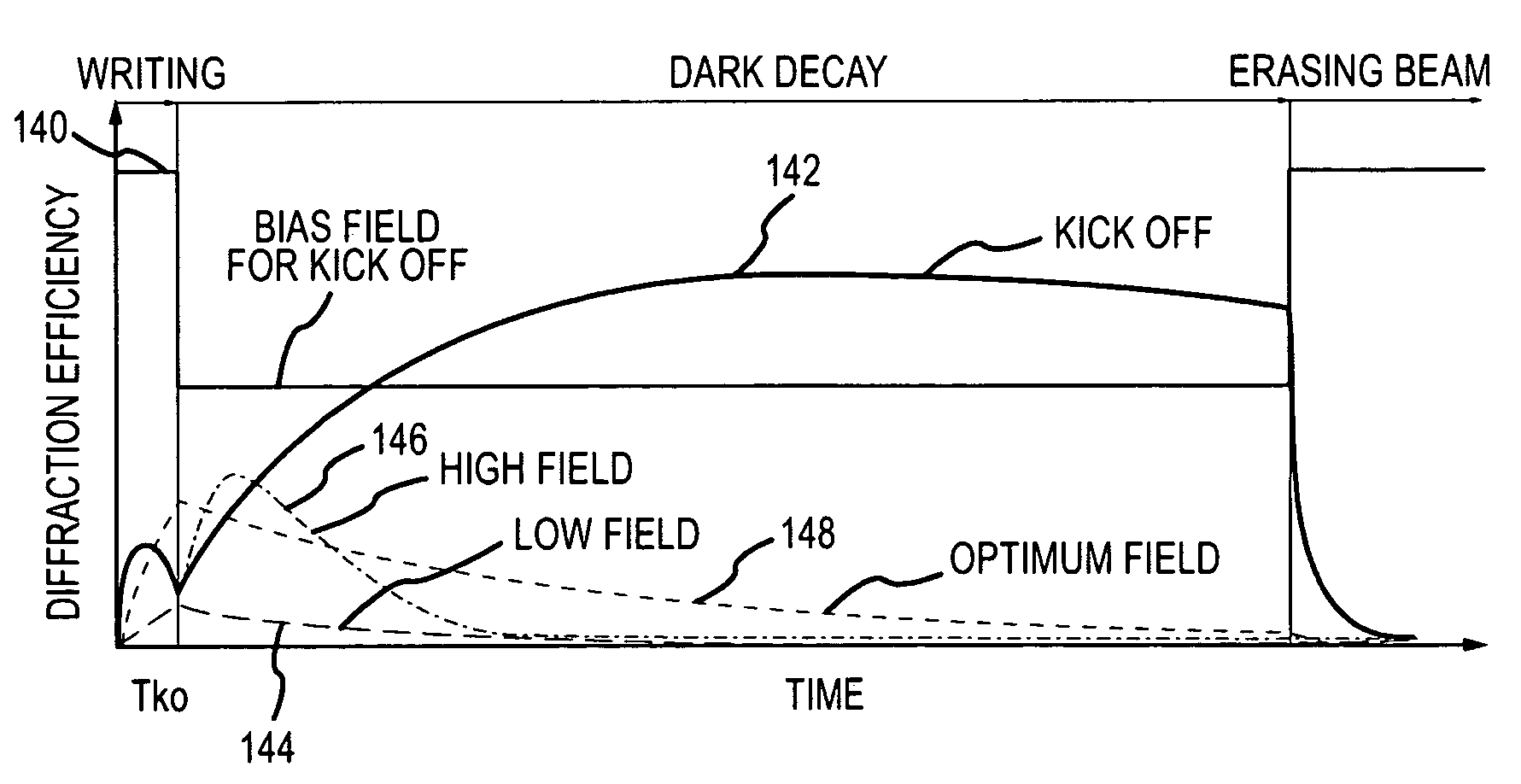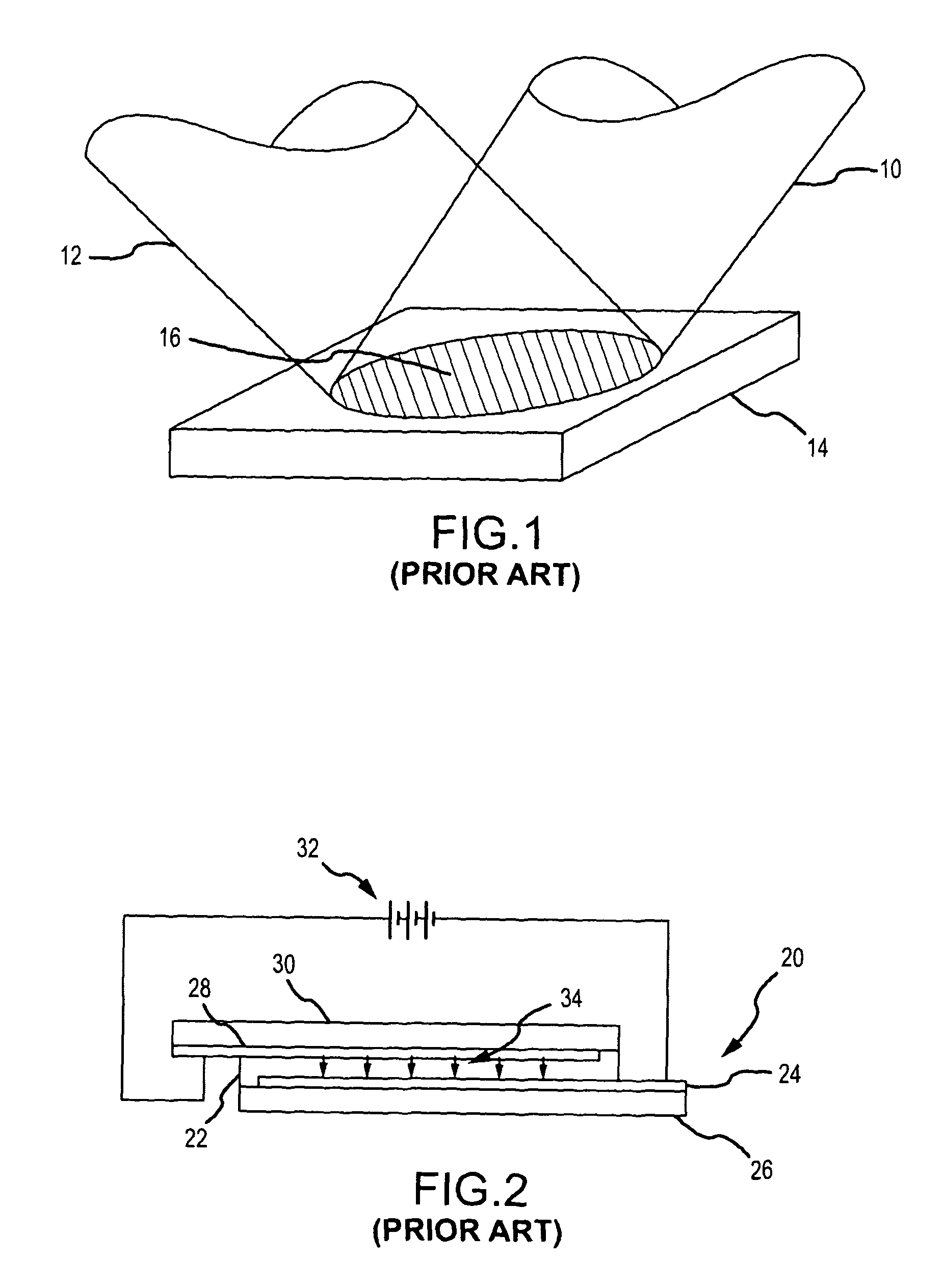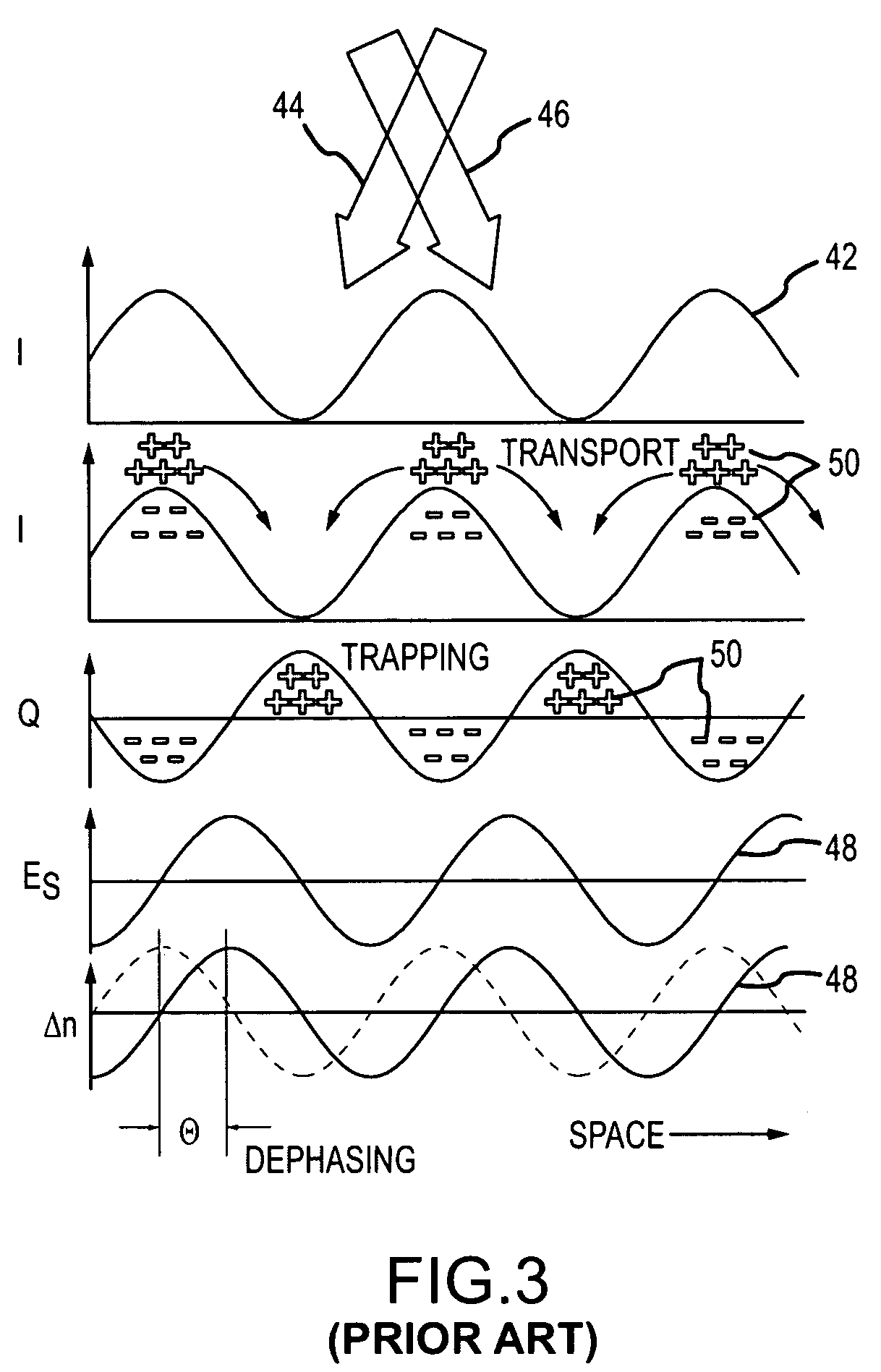System and method using a voltage kick-off to record a hologram on a photorefractive polymer for 3D holographic display and other applications
a photorefractive polymer and voltage kick-off technology, applied in the field of recording holograms, can solve the problems of reducing diffraction efficiency, requiring delay, and requiring more time, so as to reduce writing time, increase persistence, and sacrifice diffraction efficiency
- Summary
- Abstract
- Description
- Claims
- Application Information
AI Technical Summary
Benefits of technology
Problems solved by technology
Method used
Image
Examples
Embodiment Construction
[0038]The present invention provides an updateable system and method of recording a hologram on a photorefractive polymer that simultaneously reduces the writing time and increases persistence without sacrificing diffraction efficiency. This is accomplished with a voltage kick-off technique for controlling the bias electric field applied to a photorefractive polymer in coordination with the application of the writing beams and dark decay. Essentially the voltage kick-off technique applies a high electric field above the optimal field while the writing beams are on and reduces the electric field when the writing beams are off during dark decay. Known addressing techniques hold the applied field constant at the optimal field through writing and dark decay and apply the writing beams until steady-state is achieved. The voltage kick-off technique produces two separate unexpected results. First, when the writing beams are turned off and the electric field is lowered the diffraction effi...
PUM
 Login to View More
Login to View More Abstract
Description
Claims
Application Information
 Login to View More
Login to View More - R&D
- Intellectual Property
- Life Sciences
- Materials
- Tech Scout
- Unparalleled Data Quality
- Higher Quality Content
- 60% Fewer Hallucinations
Browse by: Latest US Patents, China's latest patents, Technical Efficacy Thesaurus, Application Domain, Technology Topic, Popular Technical Reports.
© 2025 PatSnap. All rights reserved.Legal|Privacy policy|Modern Slavery Act Transparency Statement|Sitemap|About US| Contact US: help@patsnap.com



